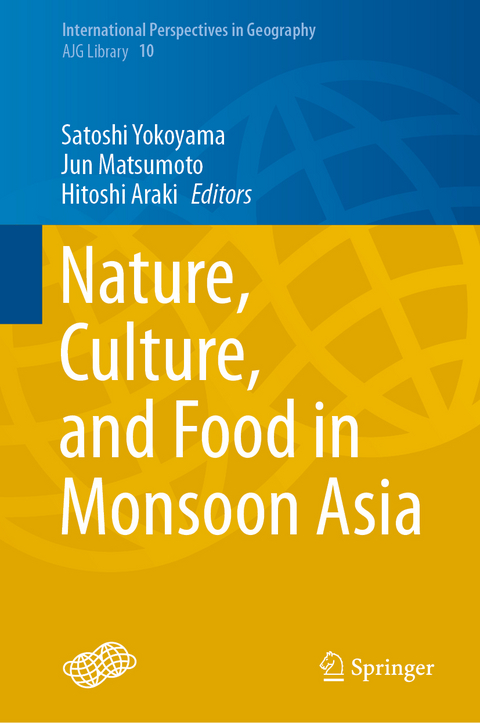
Nature, Culture, and Food in Monsoon Asia
Springer Verlag, Singapore
978-981-15-2112-6 (ISBN)
Satoshi Yokoyama is a professor in the Department of Geography, the Graduate School of Environmental Studies, Nagoya University. His research interests lie in the field of human–nature interactions, particularly in land-use change, natural resource use, and livelihood change. One of his most recent research interests is traditional fermented foods in the Himalayas and Southeast Asia region. He is an author or editor of six books and more than 90 academic book chapters and research articles. He was a visiting scholar at the East-West Center, U.S.A., from 2005 to 2006; a visiting associate professor at the Research Institute for Humanity and Nature, Japan, in 2011; and a visiting professor at the Center for Southeast Asian Studies, Kyoto University, Japan, from 2013 to 2014. Jun Matsumoto is the director of the Research Center for Climatology and a professor in the Department of Geography, Tokyo Metropolitan University. He is also affiliated with the Ocean–Atmosphere–Land Processes Research (DCOP), the Japan Agency for Marine–Earth Science and Technology (JAMSTEC) as a visiting principal scientist and an affiliate professor in the Department of Geology and Atmospheric Sciences, Iowa State University, USA. His research interests are global and regional climate, in particular, Asian and global monsoon climate, and its influence on human society. He has served as the chair of the Commission on Climatology (CoC) of the International Geographical Union since 2016. He is also the chief editor for the Human–Geoscience Section, Progress in Earth and Planetary Science (PEPS), Japan Geoscience Union (JpGU). Hitoshi Araki is a professor of geography and an associate dean of the College of Gastronomy Management, Ritsumeikan University, Japan. His research interests are economic geography, the agri-food system, and food safety. He is a founder of Japan–Korea–China Joint Conference of Geography and also a Steering Committee member of the conference (2006–Present). He has published several books in the field of food geography and is now an editorial board member of the Japanese Journal of Human Geography.
Nature, Culture, and Food in Monsoon Asia.- Rainfall, Floods, and Rice Production in South Asia.- Global Warming and Agricultural Production in Asia.- Cultivation of Glutinous Rice in Northeast India and Its Food Products.- Fog and People in Xishuangbanna, Yunnan Province, China.- Yamato-shijimi and Environmental Changes over Past Several Thousand Years at Lake Jusanko, Northern Japan.- Natto in Mainland Southeast Asia.- Distribution of Traditional Seafood Dishes and Their Background in Miyazaki Prefecture, South Japan.- Nepalese Food and Its Socio-cultural Climate: Changing Dāl-bhāt Inside and Beyond Nepal.- Brewing “Chang” or Preserving Nature: Hospitality Challenged in Contemporary Bhutan.- Satsuma Shochu and Geographic Indication.- Dietary Habits and Kitchens of the Sundanese in West Java Villages.- Creating a New Relationship with the Environment through Food-Learning from Community Development Initiatives in Kaneyama Township in Yamagata Prefecture, Northeast Japan.- Epilogue.
| Erscheinungsdatum | 17.02.2020 |
|---|---|
| Reihe/Serie | International Perspectives in Geography ; 10 |
| Zusatzinfo | 77 Illustrations, color; 9 Illustrations, black and white; XXI, 172 p. 86 illus., 77 illus. in color. |
| Verlagsort | Singapore |
| Sprache | englisch |
| Maße | 155 x 235 mm |
| Themenwelt | Naturwissenschaften ► Biologie ► Ökologie / Naturschutz |
| Naturwissenschaften ► Geowissenschaften ► Geografie / Kartografie | |
| ISBN-10 | 981-15-2112-3 / 9811521123 |
| ISBN-13 | 978-981-15-2112-6 / 9789811521126 |
| Zustand | Neuware |
| Haben Sie eine Frage zum Produkt? |
aus dem Bereich


